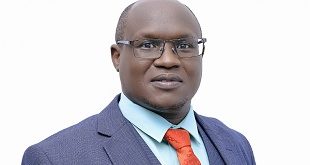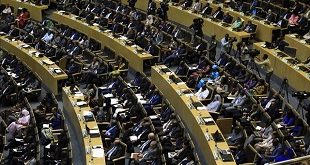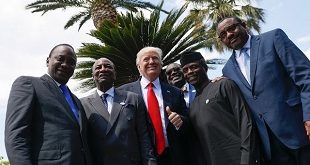
By Frederick Golooba-Mutebi
Unravels the mystery of cattle kraal diplomacy
As soon as it was announced in print media in both countries, President Yoweri Museveni’s recent visit to Rwanda became the focus of attention for journalists and watchers of the two countries and the Great Lakes region in general. It has since been a major talking point for many among Kampala and Kigali’s emergent middle classes. They wonder what on earth Museveni went to do, and what his motivation was. It is fairly recently that Museveni had reason not to turn up at Kagame’s swearing-in ceremony after he was re-elected for his second and, he emphasises, last term in office. It is also not so long ago that Kagame paid Museveni back in his own currency by finding something better to do with his time during the former’s inauguration for his 4th elected term in office which may or may not be the last.
Both leaders dispatched their Prime Ministers to represent them. The grapevine went wild with conjecture and scenario building, for good reason. Since Kagame and his colleagues seized power in Rwanda, relations between the two countries have oscillated from warm to lukewarm to ice-cold, sometimes culminating in complete, if temporary, breakdowns in direct communication. The often troubled relationship puzzles many, given the shared history of the two countries and their governments and the similarity in the ideas and aspirations that inspired the formation of the two political organisations that dominate the political scene in both countries, the Rwanda Patriotic Front and the National Resistance Movement.
Drivers of the now-good now-bad relationship do, however, become clear enough once one starts looking at things from way back before the Rwanda Patriotic Front took up arms against the Juvenal Habyarimana regime in Rwanda. It is no longer a secret, or at least no one pretends any longer that it is, that a large number of the young men and women who formed the nucleus of the rebel Rwanda Patriotic Army horned their military skills and acquired experience in subversion within the ranks of Museveni’s rebel National Resistance Army and, after Uganda’s civil war ended, the Uganda People’s Defence Forces. Earlier on, their leaders, of whom Paul Kagame and the late Fred Rwigyema were the most famous, had started their careers as fighters and insurgents with Museveni’s older outfit, the Front for National Salvation (FRONASA).
It is now also well-known that the Rwanda Patriotic Front received critical assistance from the Museveni regime and individuals within it both before and after they invaded Rwanda. While it is debatable how much material and in-kind assistance they actually received, what is clear is that the acquiescence by the Museveni government in their use of Uganda as a rear base after the war began was a key, perhaps the most important, factor in their eventual success. Over and above allowing for vital supplies to go in, it facilitated the evacuation of critically wounded fighters for treatment, and for recruits from elsewhere in the Great Lakes Region and beyond to transit into rebel-held territory. These beginnings were to impact significantly on relations between Uganda and Rwanda in the years ahead.
It is said by well-informed commentators that after the RPF installed itself in power in Kigali, difficulties began to emerge over the way Ugandan officials, including those at the highest levels, possibly buoyed by the role they had played in the war, wanted to relate to the young government and those running it. A well-known story has President Museveni continuing to refer to his former protégés, now running a sovereign country, as Bboysb. No less proud than their former mentor, the Rwandans found this more than just a little irritating. And then, the story continues, Kampala became a little too keen to provide advice, even where it was not needed, and to push for it to be followed. Those with long memories will recall that in those days some Ugandans had even taken to referring to Rwanda, albeit jokingly, as one of Uganda’s districts. While Kampala’s patronising attitude was tolerated for a while, the Rwandans eventually asserted themselves. Unable, possibly unwilling to accept that “the boys” had come of age, the Ugandans continued with their ‘superior’ attitude.
Apparently even among senior UPDF officers, there was very little respect for senior Rwandan officers who while serving in Uganda, had been their juniors. Whatever their new ranks, their former superiors in the UPDF adopted a condescending attitude. Informed sources have intimated that the famous clashes in Kisangani in eastern Democratic Republic of Congo (DRC) in which units of the Ugandan military were routed by their Rwandan counterparts and which many commentators have reduced to fights over Congo’s minerals, were the outcome of this. Apparently Ugandan officers in Congo expected their Rwandan counterparts to follow without question, their instructions about where and how to deploy their forces. In Kisangani where the clashes took place, the battle of wills involved Uganda’s Maj. Gen. James Kazini (RIP) who sought to dictate matters and his counterpart, Lt. Gen. Patrick Nyamvumba who wouldn’t let him. The humiliation the UPDF suffered at the hands of the RDF has reportedly continued to cloud relations between the two forces and their governments.
Another factor contributing to the troubles and with deep roots in the historical relationship has been a peculiarity of politics as an arena where there are neither permanent enemies nor permanent friends. Over time both countries have witnessed several episodes of falling out among former comrades at arms, and consequent decisions by some individuals to flee into exile. As many Rwandan civilian and military officials lived and grew up in Uganda and at one time fought or worked side by side with their Ugandan counterparts in security and civilian organs of the state, friendships developed, some of which have endured regardless of goings-on at the level of inter-state relations.

And so whenever Rwandan officials have found themselves in trouble, many have fled to Uganda where they have friends and, for some, even relatives, before they decide what to do next. Likewise, after the 2006 elections when several Ugandan army officers found themselves in trouble over supporting Museveni’s arch-rival, Dr. Kizza Besigye during that year’s presidential campaigns, Rwanda became the ‘natural’ destination. They had friends or contacts there who, they hoped, would offer them protection. Analysts point at these occurrences as yet another source of tensions as either side has suspected the other of trying to use its dissidents as agents of destabilisation.
The latest focus of attention, at least for the Rwandans, is former Army Commander Lt. Gen. Faustin Kayumba Nyamwasa and former external security boss, Patrick Karegyeya, both exiled in South Africa after fleeing through Uganda. There are numerous claims, including in the media, that both men, who have made no secret of seeking to topple the Kagame regime and been declared enemies of the state in Rwanda, maintain active links with individuals in Uganda. Also, only a few years ago media reports revealed that Rwandan Hutu exiles with links to rebel groups in Congo, were travelling on Ugandan passports, although it was never clear whether they had been given to them officially, or if they had exploited loopholes in the organs of the state concerned, to get them.
It is against this general background of troubled relations that President Museveni left for Kigali for his second state visit in 10 years and, contrary to past practice, by air rather than by road. It is therefore fitting that observers should wonder about what to read into the visit.
A senior official at the centre of arranging the visit intimated that his phone had not stopped ringing as journalists and diplomats sought answers to some questions, among them, “what does it all mean; why is he visiting?”
Commentators have been quick to jump at the suggestion that the frost on the two countries’ relations, which is not reflected in the way ordinary Ugandans and Rwandans who travel in their thousands across either border on a daily basis, feel about each other, has started to thaw. But has it? Skeptics in both countries are not popping their champagne yet. In general terms, however, it can only be good that gestures of friendship are on display. They may not represent the “excellent relations” diplomats on both sides have been touting, but they are certainly better and more exciting than the tensions neither country needs. But why would the two countries be making up or openly trying to make up in such a big way at this particular juncture?
For one thing, with improved relations, both countries and the Great Lakes region in general become more secure. Dissidents on both sides with eyes on destabilising one with the help of the other face a much more difficult task. And with both countries secure in the knowledge that neither is trying to destabilise the other, each can turn their attention fully to combating security threats from elsewhere. Rwanda turns its attention fully to threats from Congo-based rebels, Uganda also to its Congo-based insurgents who are reported to be increasingly active again, and to the remnants of the Lords Resistance Army in the Central African Republic, who may seek to return through southern Sudan whose stability in the medium to long-term is desirable but hardly guaranteed. The fewer the fronts they have to watch and possibly fight on, the better for each government.
There is probably also a more human side to the apparent rapprochement. Kagame has made it clear he will be stepping down at the end of his current term. As for Museveni, we can only speculate, given that for him the issue of his retirement is neither here nor there. However, informed sources say he’s no longer averse to the idea, and that in fact he is avoiding declaring his intention to leave in 2016 only in order not to cause a stampede by those intending to join the succession queue. Assuming that this is true, it is possible the two men would wish to see their successors start with a clean slate rather than be saddled with old baggage. Even assuming that Museveni will hang on, it would be pointless to pursue a feud with someone who, barring unforeseen circumstances, will be gone in six years’ time. But also, if Museveni too chooses to retire, it can only be good if he does so with a friendly fellow retired President in Rwanda with whom he shares the love of cows and with whom he can compare notes on the subject from time to time.
Is there an East African Community angle to this? Some commentators would like to think so. They claim Museveni is up to seeking Kagame’s support for his ambitions to be the first President of East Africa after he retires. Two things make that rather far-fetched. It is hardly certain that by the time Museveni is due to retire, East Africa will have evolved to the point of readiness for a regional president. Tanzania’s constant dragging of the feet in as far as the EAC’s evolution towards political integration is concerned dims those prospects somewhat. And it may be as a result of recognition that Tanzania may not be changing its attitude soon, that Museveni and Kagame might explore how to move ahead in ways that are mutually beneficial. We know that Rwanda and Kenya have waived work permit requirements for each other’s citizens seeking employment in either country and, that this is serving them very well.
The visit may also have to do with Rwanda’s growing reputation as a fast-developing country with an efficient and effective government extraordinarily capable of getting things done in its bid to achieve socio-economic transformation. Those close to State House in Uganda say Museveni is deeply frustrated by the failure of his government to achieve many of the goals he has set for it over the years. It is possible he went in search of inspiration and also to learn a few lessons from the man he used to refer to as ‘a boy’ but who today is arguably East Africa’s most respected statesman. Pointers to this include his tour of Kigali, East Africa’s cleanest city, and visits to the countryside to observe the workings of poverty reduction and social transformation projects the Kagame government is using to uplift the living standards of Rwandans. It is instructive that he chose to participate in umuganda the end-of-the-month, mandatory communal work through which ordinary Rwandans, working with local leaders, lend a hand to their government as it seeks to ensure they live in a clean environment and to build a society that is at ease with itself. It is possible he and his entourage will return here with ideas about how to run an effective government that delivers on its promises. If by then the two countries have buried the hatchet for good, skeptics will have every reason to reach for the champagne.
The writer is a Senior Research Fellow, Institute of Social Research, Makerere University
 The Independent Uganda: You get the Truth we Pay the Price
The Independent Uganda: You get the Truth we Pay the Price


